THE HOBBIT Trilogy - A Lesson in Excess
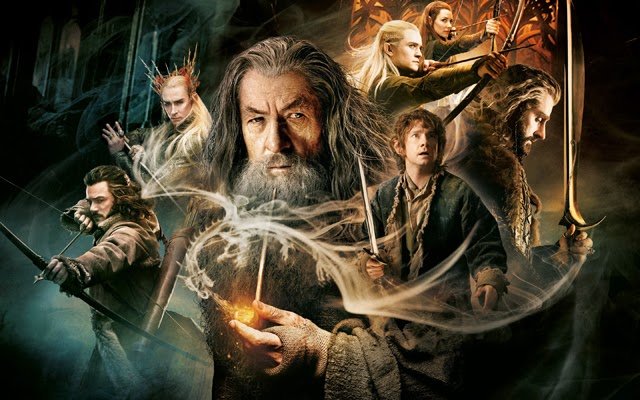
Image source
Without a doubt, The Lord of the Rings trilogy affected my life more than any other film I saw as a kid. At thirteen years old, I sat down in the theatre and watched a movie for the first time that would become my favourite movie to this day. The Lord of the Rings: The Fellowship of the Ring (2001) was unlike any other film I had ever seen. It was almost like Titanic (1997) in its feeling of size and majesty on-screen, but with a far more wide-ranging world and sense of adventure. Peter Jackson's ability to tell an exciting and epic, yet intimate and emotional, story with such visual beauty (even for the ugly and violent parts) and feeling of believability was simply masterful. There is no other way to say it.
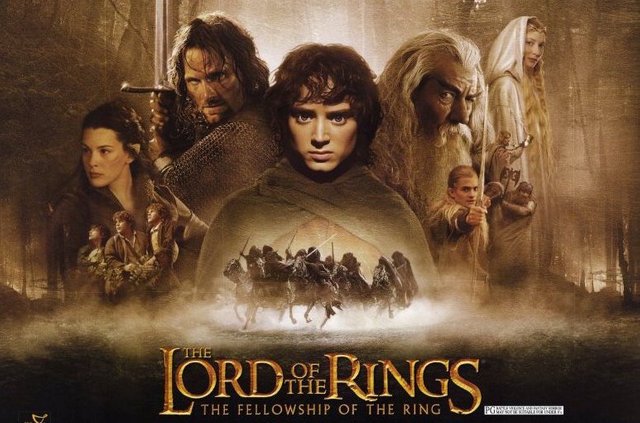
Image source
Having loved Lord of the Ring so much, I was naturally looking forward to The Hobbit films quite a bit. I knew it wouldn't be as great, but it would most likely at least be something good that felt faithful to Tolkien's book and sat along side Lord of the Rings well, if not achieving the same level of dramatic weight or importance. And I was... about a third correct.
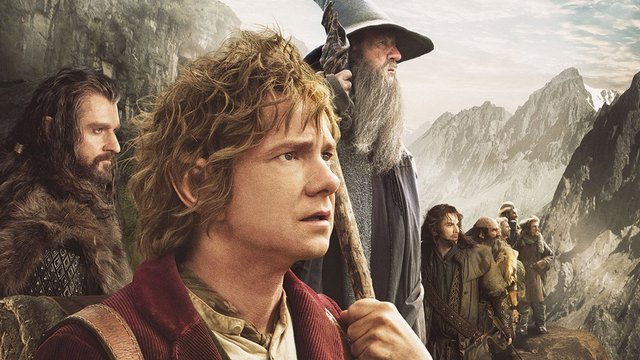
Image source
The Diamond In The Rough
There is definitely a good movie buried under all the excess of the three films, running a combined 7 hours and 42 minutes in its theatrical form (8 hours and 52 minutes in extended edition), which is only 96 minutes short of The Lord of the Rings trilogy's theatrical runtime. I know this, because I created a fan edit of the films which cut them down to one 3 hour 20 minute movie. (don't tell anyone... but you can download it HERE)
While it may not be perfect, it's a pretty damn good adaptation of Tolkien's book, with great acting from Martin Freeman, Ian McKellan, Richard Armitage (admittedly, a bit too theatrical at times, but does the character justice), Ken Stott, Luke Evans, Andy Serkis and Benedict Cumberbatch (ooh baby, is his voice a plus for this adaptation!).

Image source
The cinematography is great, appropriately brighter and more colourful than Lord of the Rings, even if the digital look of shooting on RED cameras instead of film is noticeable. It looks and feels like the same Middle-Earth that Peter Jackson established in the first trilogy. Howard Shore's music is brilliant again, especially with the Dwarven theme "Misty Mountains", which was sadly only used in the first of the three films, and which I find even more memorable than the Fellowship theme. There are many scenes that showcase even more impressive CGI effects than Lord of the Rings had, including Gollum and Smaug, two digital characters that really shine in The Hobbit. Gollum/Smeagol looks even better than he (they, precious?) did in Lord of the Rings, and Smaug is just the coolest thing in the entire series.
Peter Jackson made a good movie. He just made too much of it. Way too much of it. Way way... too... much.
The Road Goes EVER On...

Image Source
It can't be ignored that Lord of the Rings had already faced some criticism for being too long. In particular, The Return of the King (2003) and its "multiple endings". The thing was, Lord of the Rings had to be long. It had a lot of story to tell, and it would have been criminal (legally criminal!) to cut too much of it. They widdled the story down as best they could. (taking out of the Scouring of the Shire was an obvious choice... just imagine how numerous the the complaints about "multiple endings" would have been if they hadn't...) And I believe that having to cut down a longer story into something shorter can often help to actually make it better. It's the "cream of the crop" factor, where they're taking the best pieces of the story and stringing them together into a more streamlined version. This works well for cinema, in which timing and pace is an integral factor. That's not the case with books, which readers can enjoy at their own leisure, reading however fast or slow they please. For that reason, Tolkien's writing has always worked quite well for literature, but been very difficult to adapt into a workable film. Doing a trilogy of 3 hour movies was just about the perfect way to do it, in my opinion. It's a good amount of time, the trilogy format feels inherently satisfying dramatically and it matches the three book form that Lord of the Rings was published in.

Image Source
The Hobbit, however... was only one relatively simple and short book. In order to make three films out of it, they had to inflate the story. This, for obvious reasons, tends to create the opposite effect of what happened with Lord of the Rings. Inflating a story means throwing more crap into it that is most likely irrelevant to what the story was originally about. If it were relevant, it most likely would have been in the original story. They tried to use material from Tolkien's other writings, including peices from the Appendices of The Lord of the Rings, as well as the Silmarillion... but it still doesn't feel like it belongs in these movies. The Hobbit is a tale about Bilbo's adventure with Gandalf in helping a band of Dwarves retake their homeland. Throwing in a bunch of direct setups for The Lord of the Rings, embellishing all the action scenes into extended sequences of contrived nonsense, adding in characters, a love-triangle, an onscreen arch-villain, etc... it really proves the phrase "Ten pounds of shit in a five pound bag."... except in this case, it's about FIFTEEN pounds of shit in a five pound bag!
Some of it even got on Radagast!
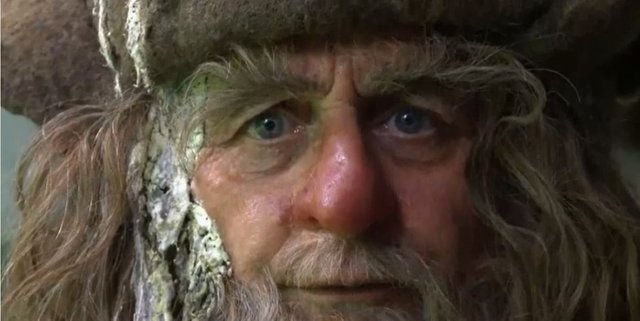
Image source
In Defense of Peter Jackson
I don't really blame Jackson for how bloated these movies are (well... maybe a bit... once we get to those action sequences...). I believe he was trying to please the multiple studios that had stakes in the project (Warner Bros, New Line Cinema, MGM, The Weinstein Company and Saul Zaentz). There had been a lot of issues getting the film to production, which started with the aim of making two films and were to be directed by Guillermo Del Toro, of Pan's Labyrinth (2006), Hellboy (2004) and Blade II (2002) fame. While the exact reasons that Del Toro left the project are somewhat subject to speculation, the official story is that Del Toro's schedule was conflicting with how long pre-production for the films was taking. Rumours suggest that it may have been pressure from the multiple studios to compromise on his vision that drove him away. The studios wanted something closer to what Lord of the Rings had been, and Del Toro was trying to make something too different perhaps. He says his vision would have been a more "operatic" approach to the story. I'm not sure if I know exactly what he means by that, but according to Ian McKellan, the whole thing with the subtle love-interest between Gandalf and Galadriel was a Del Toro idea. (this aspect of the films has been criticized by fans, so who knows whether fans would have liked Del Toro's version) I certainly love Del Toro's films quite a bit, so I trust he would have made something good. But alas, for whatever reason... it was not to be.

Image Source
Peter Jackson had said towards the end of making Lord of the Rings that he had learned exactly why nobody had ever attempted such an enormous, complicated film project. It was a tough journey. He said the next film he worked on would be "simple as hell"... then went on to make King Kong (2005). King Kong was a film which also suffered from excess. Another example of trying too much to expand on a simple, short story. But unlike The Hobbit, Jackson embellished too much because he had always wanted to make a King Kong film (his favourite film as a child), and he wanted to delve more into the emotion of it. King Kong feels a little stretched out and melo-dramatic at times, but overall, it feels fairly well paced. Perhaps it just takes too long to actually get to Skull Island and see King Kong for the first time. (about an hour into the movie)
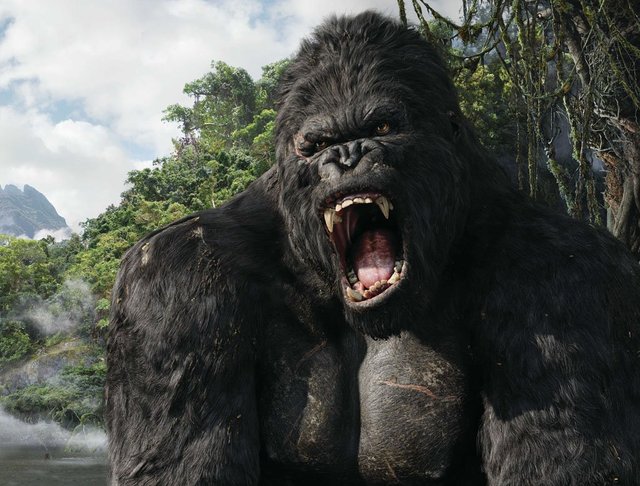
Image Source
Peter Jackson didn't even really want to direct The Hobbit. He was happy to just produce it with Del Toro directing. But once Del Toro dropped out, Jackson was in a tough spot. There was nobody better suited to take up the project in a pinch than he was. Even as he explains how difficult and chaotic the shoot was for him, he says that his experience making films, and making Lord of the Rings in particular, is the only thing that made it possible for him to actually direct the films without having the necessary amount of time to prep them. You can see how troublesome things became in this excerpt from the DVD/Blu-Ray features here It's hard to say that anybody other than Jackson could have done a better job, given the circumstances.
So I cut good old PJ some slack. Despite the less than ideal circumstances for the production, and the poor choice (whoever's it was) to further expand from two films into three films... I think Jackson really did try his hardest to make these movies work and please as many people as possible. It's just that pleasing everybody often means that you end up pleasing nobody.
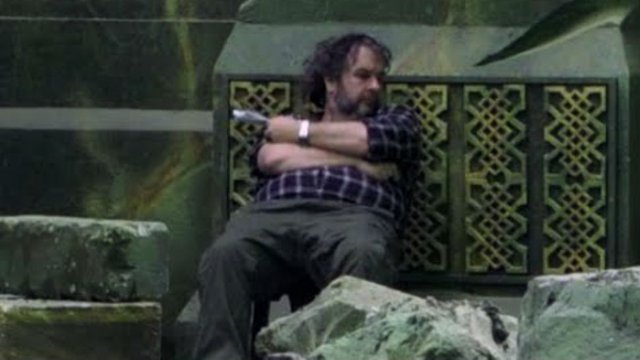
Image Source
The Effects of Lacking Focus
Storytelling is a tricky balancing act. It's all about knowing what to focus on, what your audience will be thinking about while being told the story, how to hold their attention and keep them interested all the way through. The key to success in telling a compelling story, particularly for cinema, is staying on-point. What is the overall film about, and how does each piece of it play towards that?
The Hobbit gets bogged down into too many sub-plots, extended sequences that go on past their initial point, action sequences that get so outlandish as to stretch believability past the breaking point, and a loss of the genuine, simple adventure from the source material. This story really only needed to be one movie. Two movies may have been alright, if a little bloated... three movies is just ridiculous overkill. One of the highly suspected reasons for doing this was the financial incentive. Three movies made from the same production would be more profitable, which they certainly were. Peter Jackson's initial annoucement of the decision stated that he and his fellow creatives on the project had decided that they had more story to tell with these characters, but something tells me that was just a publicity statement. One of the key things that was added after the three film decision was the Tauriel love-triangle with Legolas and Kili. Something even Evangeline Lily herself was not pleased about, and which was reportedly a demand from the studios.

Image Source
It feels unnecessary, tacked on and not really very Tolkien-esque. Tolkien could write about love, for sure, but it was usually more meaningful than just being love for the sake of love. Aragorn and Arwen, an echo of another love-story in Middle-Earth between Beren and Luthien, was about marriage between Men and Elves, between human and the devine. Part of the mythology of Middle-Earth is that the blood of the Elves is still in us, manifesting through beautiful works of art, as Phillipa Boyens muses about in the LotR DVD Appendices, "If you look at the works of Raphael, you can see... the Elves are still with us."

Image Source
The love story between Tauriel and Kili doesn't mean anything. Perhaps by default, just being between an Elf and a Dwarf, it's trying to mean the same thing that the friendship between Legolas and Gimli means in Lord of the Rings. But it feels so hamfisted and out-of-place in the films, which prevents it from having any impact other than being groan-inducing. Aragorn and Arwen's love story was embellished from what it was in the books as well, but that felt appropriate to Aragorn's character arc, and included some of the trilogy's most beautiful imagery.
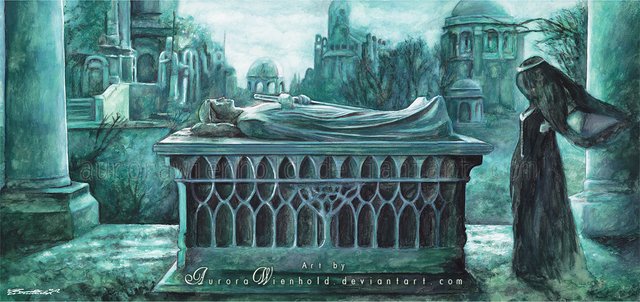
Image Source
The Hobbit doesn't have the same kind of sweeping majesty and dramatic weight of Lord of the Rings, so trying to throw in a love story is going to feel off as it is... but making it a cliched love-triangle, involving a character like Kili that was rather comedic to begin with... comes off really forced and rather silly. It's hard to be moved by a love story that doesn't feel at all based on anything. Aragorn and Arwen had a history. Tauriel and Kili just meet and fall in love... because reasons. Because he's "quite tall for a dwarf"? Because he "could have anything down his trousers"?
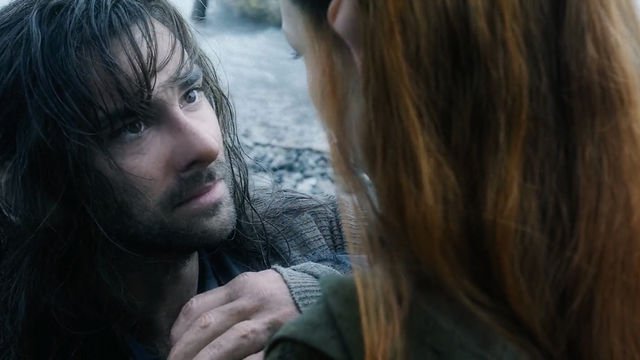
Image Source
Yeah, not buying it.
You Step Out Your Door, And If You Don't Keep Your Feet...
...there's no knowing where your place in the story will get swept off to!
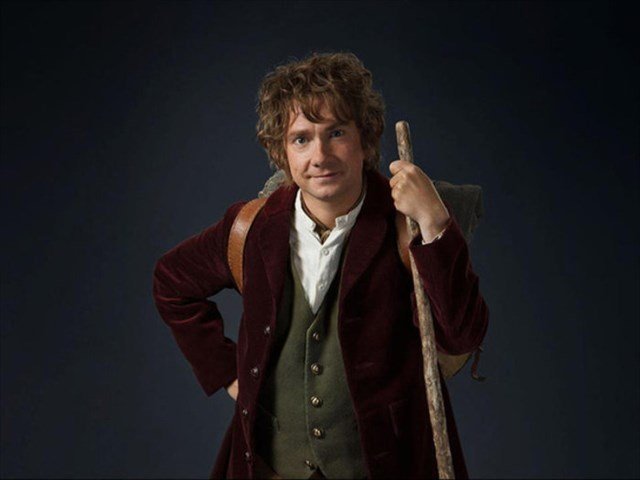
Image Source
Bilbo is the protagonist of this story. He's "The Hobbit", for crying out loud. One could argue that the focus often wandered from Frodo in Lord of the Rings, especially in Two Towers, where his story was relatively light and had to be embellished with an added conflict from Faramir. But he was never as drowned in other characters' stories as Bilbo gets in these movies. Overall, it feels so much more like the Dwarves' story than Bilbo's. And then at times, it feels more like Gandalf's story. It's an ensemble piece for sure, as Lord of the Rings was. But it feels so much more messy this time. We simply don't care as much about the threads focusing on Gandalf and the White Council or Legolas and Tauriel and Kili or Bard vs the Master of Laketown or all the action sequences involving all these secondary characters that go on too long, get too ridiculous and don't have any relevance to any story points. So the effects of losing focus on the real heart of the story are felt so much more, because we're constantly waiting to get back to the point of this whole thing.
Here's where I do have to criticize Peter Jackson himself a bit. He's always had a bit of this tendency to over-indulge in the ridiculous. He started as an excessive horror filmmaker, making movies like Bad Taste (1987) and Braindead (1992), as well as the utterly crazy Meet the Feebles (1989). Even Lord of the Rings had its excessive action. The "Leggy" moments with Legolas went from cool to a bit much to kinda ridiculous by the time he's surfing down an Oliphant trunk... in The Hobbit, they shoot right past the extremes of ridiculousness at Ludicrous Speed.
They've gone to plaid!
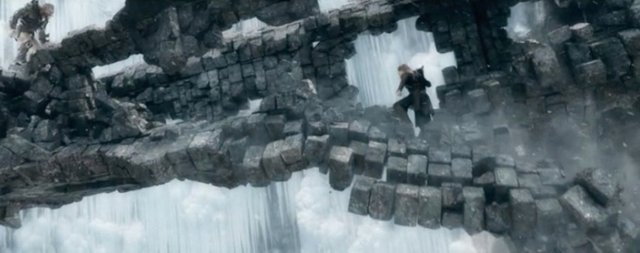
Image Source
And perhaps some of these excessive moments would have worked better... if they didn't LOOK so damn fake. The CGI is strong in many parts of these movies... but then at other times, it can look downright unfinished. Worse than anything in Lord of the Rings, which was made a decade earlier. There's no excuse for that, but the explanation is most likely that things were more rushed on these movies, especially for the second and third which took the brunt of the three-film expansion. The added material was done with reshoots, which tend to have a lower level of production than principle photography. So it's easier to do things digitally than to rebuild sets, hire a bunch of actors, etc... things got pushed more onto the visual effects team, and a bigger workload in a shorter amount of time means not as much time spent on each shot.
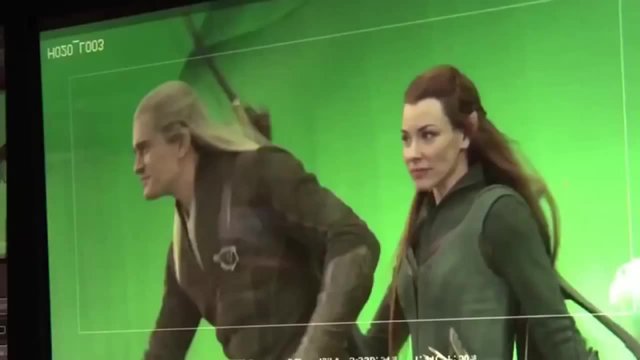
Image Source
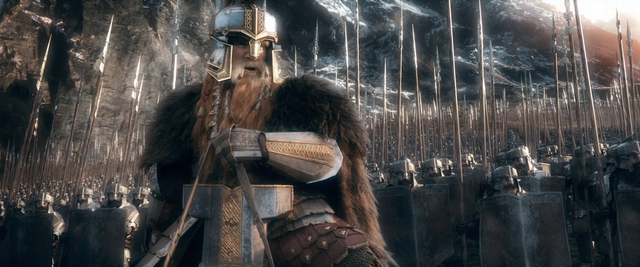
Image Source
Some of the design choices in this movie are questionable as well. I've gone over how important design is in my article "What Is It About Star Wars?", and in that, I used an example of The Hobbit vs Lord of the Rings in how the believability of CGI makes a difference in how serious something can be taken by many people. But even beyond the problem of too much CGI for things that could and/or should have been practical, there's a few issues in just the conceptualization of some of the elements of the story. The first is Thorin Oakenshield himself.
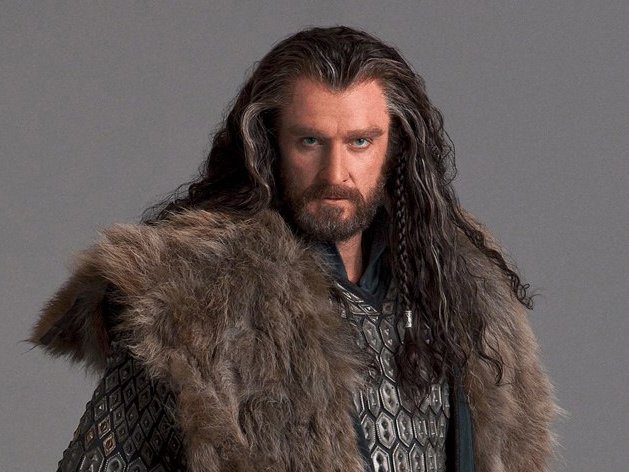
Image Source
He doesn't look enough like a Dwarf. I could have accepted this for just Kili and Fili, but Thorin? He's the leader. The head Dwarf. He should be THE iconic Dwarf of the movie, and he looks more like a Man. I feel like even something as simple as just giving him a full beard would have helped greatly. Why trim his beard so much? Were they afraid it would get in the way of his performance/character? Never been a problem for Gandalf.
But beyond Thorin, most of the thirteen Dwarves look a little more Disney than they do Peter Jackson/Tolkien. Dori, Nori and Ori in particular look like they belong more in Snow White than Middle-Earth.
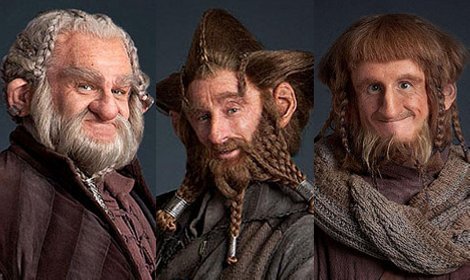
Image Source
And let's not get started on stupid things like Dain's hog-horse thing...
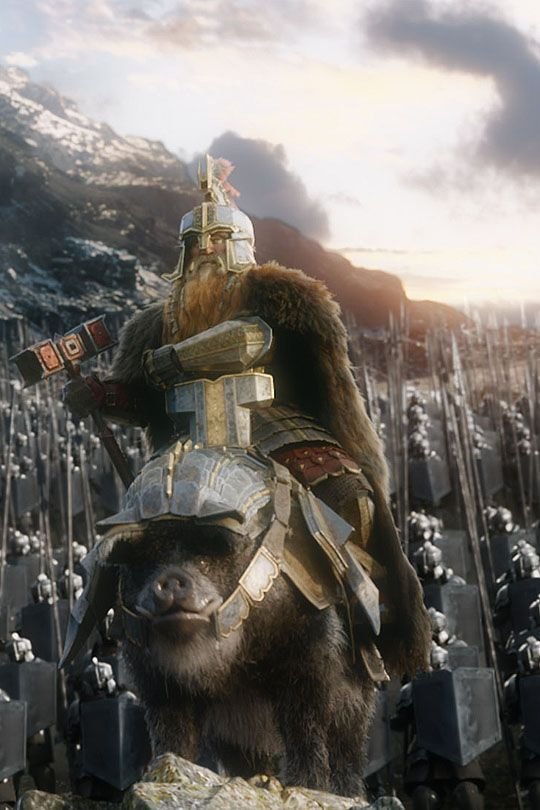
Image Source
The other problem I've often had with Peter Jackson is his goofy sense of humour. There are jokes in many of his films that don't land due to being too childish and out-of-place in his otherwise mature, dramatic films. The Hobbit may be the biggest victim of this in his entire filmography. There was definitely a call for more humour in this than in Lord of the Rings, but the sheer amount of fat jokes with the Dwarves (particularly Bombur), the extent of "creative" deaths for the orcs or fight moves from the Dwarves during battle scenes, the overdone silliness of Radagast, or even some moments from Gandalf that feel unnecessary... it's all just too much and makes the movies feel too silly for their own good. It's a kid's story, yes... but kids don't need obvious jokes at every opportunity to feel entertained. A fun adventure is enough. It's all these movies really needed to be.
So Where Do These Movies Stand?
It's unfortunate, really, that the form these movies were released in is all that most people will ever see them in. Because as I've stated and tried to prove with my fan edit, there's a good adaptation of The Hobbit buried in these movies, and it works well enough to both stand on its own and along side Lord of the Rings.
I would love if, one day, Peter Jackson or Warner Bros. decided that they want to actually do a single film edit and release of what they shot. They have the material to do it. Fans other than just me have been making multiple edits of the films to prove it's possible to make something workable and more true to Tolkien's story than what was officially released. They have to know it's something fans would appreciate and pay for. With their resources, they could use some digital trickery to make it work better than a humble, lonely editor like me can achieve. It'd be worth doing. A "De-Extended Edition" if you will.
But that will probably never happen. As such, I'm afraid these movies will live on as being just the missed opportunity that most fans lament over.
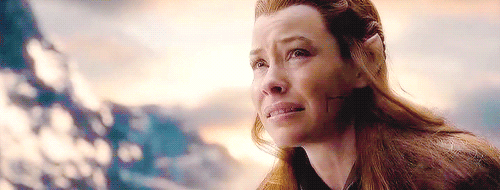
Image Source
It's too bad, because when I personally watch my fan edit... I see that it so easily did not have to be this way.
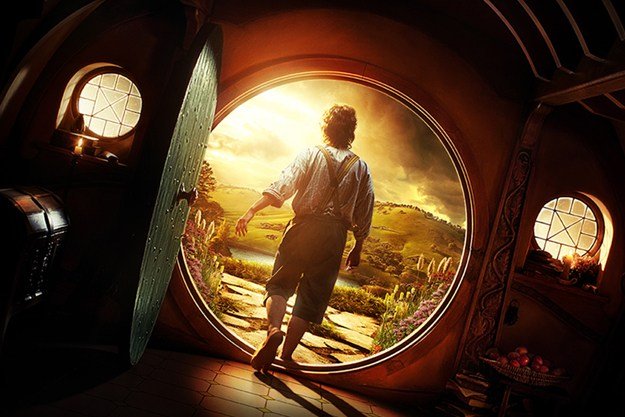
Image Source
There's is a lot that is great about these movies. I have often seen them compared to the Star Wars prequels in terms of terrible execution of a prequel trilogy to something much better that had come before. And while I certainly see the reasons for such a comparison, I have to disagree. I've also done a fan edit of the Star Wars prequels before, and they simply don't work as well no matter how hard I tried to make them work. The acting is too bad, the effects are too noticeable and dated, and the entire approach to the story can't be entirely fixed. Whereas with The Hobbit... all you have to do is remove the excess and what remains is great. Flawed, yes, but great. It doesn't rise to the level of Lord of the Rings, but The Hobbit was never supposed to be Lord of the Rings. Trying to make it Lord of the Rings is what sunk it in its three-film form. Allowing a simple story to be a simple story... usually works better than trying to complicate it. There's a common phrase in storytelling that says, "Keep it simple, stupid!"... it definitely applies here.
You have a minor misspelling in the following sentence:
It should be pieces instead of peices.Frankly, I'm surprised there aren't more than that. Lol
Congratulations @aws77! You received a personal award!
Click here to view your Board
Congratulations @aws77! You received a personal award!
You can view your badges on your Steem Board and compare to others on the Steem Ranking
Vote for @Steemitboard as a witness to get one more award and increased upvotes!